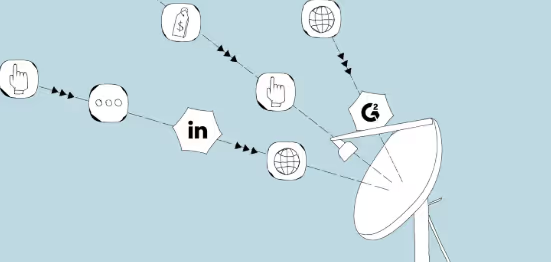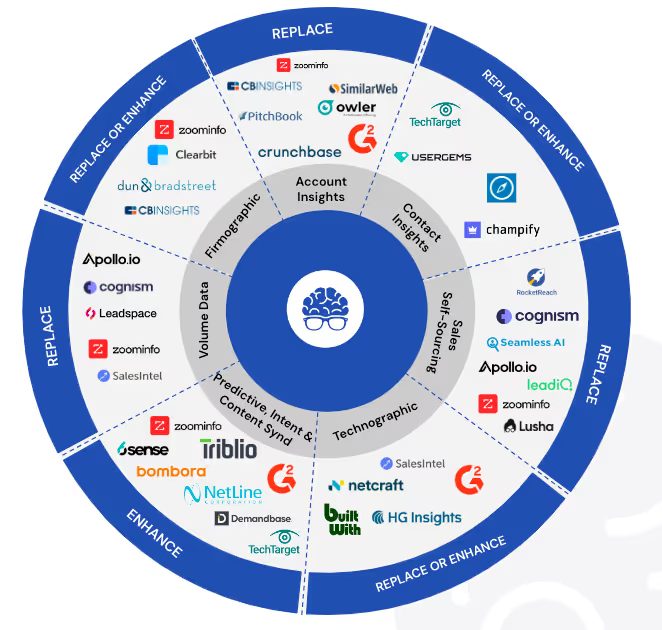There’s a quiet revolution happening in B2B go-to-market, and it starts with a simple realization:
Firmographics have gone stale.
For twenty years, sales and marketing teams have built their strategies around static descriptors — industry, headcount, revenue band, location. These were the shorthand for “fit.” They told us who a company was, but not what they were doing or where they were going.
Today, that’s not enough.
The Death of Firmographic Fit
Open any intent-data dashboard or CRM segment and you’ll see the same comfortable labels:
“Manufacturing, 1,000–5,000 employees, EMEA HQ.”
It feels concrete — scientific, even. But it’s a mirage. These traits describe a company’s identity, not its momentum. They explain the past, not the future.
What actually drives a deal forward isn’t that a firm exists; it’s that it’s changing.
Are they opening a U.S. subsidiary?
Hiring in finance or compliance roles?
Adding a Peppol Network connection to manage cross-border invoices?
These are not firmographics. These are account signals — micro-indicators of operational intent that reveal when a company is moving from passive fit to active readiness.
The EMEA Example: The Invisible Market Under the Surface
Consider a major international tax and compliance firm expanding its EMEA footprint.
They might think they have a clear TAM — every mid-market business with VAT exposure. But when you map signals instead of firmographics, something else emerges.
You start to see which of those companies recently launched a U.S. operation, began hiring tax specialists, or filed a cross-border compliance officer role. That subset — maybe just 10% of the total — represents 80% of the real buying activity.
That’s the difference between a database and a discovery engine.
Why Databases Keep Failing GTM Teams
Traditional data vendors like ZoomInfo and Cognism were built for a different era — when the world moved slower, and “fit” could be captured once a year.
They give you structure without story.
What they miss are the signals that matter most:
- New operational entities
- Strategic hiring movements
- Shifts in finance or procurement workflows
- Localized technology adoption
- Cross-border compliance behavior
These are the breadcrumbs that predict where budgets are forming before they’re announced.
They’re what LeadGenius captures — not just what a company is, but what it’s doing right now.
Introducing the Account Signal Score
Imagine ranking accounts not by headcount or ARR, but by their operational acceleration.
A new framework emerges: the Account Signal Score — a composite of behavioral and contextual indicators that quantify readiness to buy.
- A company adding ten finance hires in six weeks? +30 points.
- New Peppol Network registration? +25 points.
- Fresh U.S. entity incorporated under the same parent? +40 points.
Stack those signals, and you start to see patterns — the difference between noise and narrative.
The Account Signal Score transforms your ICP into what we might call an IDP — an Intent-Driven Profile.
It moves your targeting from theoretical fit to live-fire prioritization.
From Waste to Precision
The results compound fast.
When SDRs chase accounts showing live operational intent, conversion rates climb, cycle times compress, and pipeline volatility drops.
You waste fewer hours chasing ghosts that only look like good fits.
In an era where every GTM team is under pressure to do more with less, prioritization isn’t a luxury — it’s a competitive moat.
LeadGenius and the Future of Predictive Fit
LeadGenius sits at this intersection of intelligence and action.
We source, verify, and deliver these micro-signals at global scale — not as “feeds,” but as living data pipelines that integrate directly into your RevOps stack.
The promise isn’t just better data. It’s data that thinks in motion — aligning strategy, marketing, and sales around the same dynamic source of truth.
Because the future of B2B doesn’t belong to those who know who their customers are.
It belongs to those who know when they’re ready.




